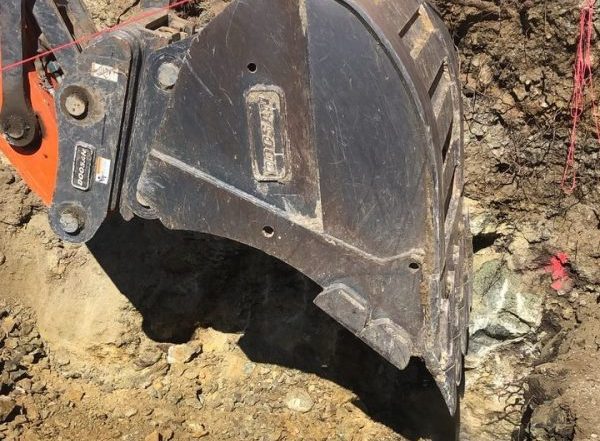The Demolition Process in Construction

For most landscaping and construction projects with existing structures on the property, one of the first steps is demolition of existing features like pools, garages or in-law units. Each job is unique, especially where there is limited access, but demolition can be pretty straightforward and doesn’t have to take a lot of time. However, the most important thing is to understand what the plan is, and the tools and manpower we need to bring to bear.
Construction Demolition Methods
In Northern California we no longer crush the pool or house into a big pile and haul it to the dump. With an estimated thirty percent of what goes into landfills being construction debris, the state of California mandates that we recycle many materials that come from our demolition work. Wood, Sheetrock, concrete, masonry and wiring are now all being recycled instead of being dumped in landfills. We usually truck out and reserve all the dirt we excavate as well, for reuse in the same project or another one.
Steps to Property Demolition
If you have decided to demolish a home or other property, these are the steps we recommend you follow. The landscape designers we work with typically follow this process as well.
- Get the right contractor
Find a licensed and insured contractor to handle the demolition. Your candidates should be ready to meet at the site to discuss your options with you.
- Inspection
In some jurisdictions, older structures have to be inspected prior to demolition to determine if there are any signs of:
- Lead paint
- Asbestos
- Rotten wood
- Mold
- Other hazardous materials
- Get the relevant permits
You will likely need a permit before we start demolition work. In most cases, you can obtain the permit from your local authority offices or on their website. You may also have to adhere to municipal rules related to notifications, noise, hours of demolition, or disposal of debris. We track the changing codes of all Northern California cities, counties and the state to keep you aligned with these rules.
- Identify and disconnect any existing services
With many utilities now buried in newer communities, locating utility lines must occur before work can start. There are also utilities and services that must be disconnected prior to demolition, like sewerage, electricity, water, and/or gas.
- Make the area safe for others
We also ensure that the adjacent walkways and buildings are protected with some combination of scaffolding and temporary fencing.
- Make arrangements for salvage
Salvageable materials must be handled properly. Work with your contractor to understand how they plan to recover and redirect reusable or recyclable materials. Depending on the situation, you could sell or donate some of this material, although the process is cumbersome if you choose to do it yourself. We operate using established processes that meet the 4Rs materials handling goals.
- Complete the demolition
This can take several days depending on which deconstruction process you choose. In most cases, it involves the use of multiple excavators and a crew to tear down the house, load the demolished material in trucks and haul it away.
- Leave a clean site for the next project phase
The final step in any demolition is to leave the site in great condition for the next phase of the landscaping or construction project.
Lassiter Excavating is a demolition expert serving serving landscape designers, home builders and residents of the Bay Area.
We have been offering expert services and advice for excavation projects and demolitions since 1989. Contact us at 925-449-3112 or use our online contact form.

